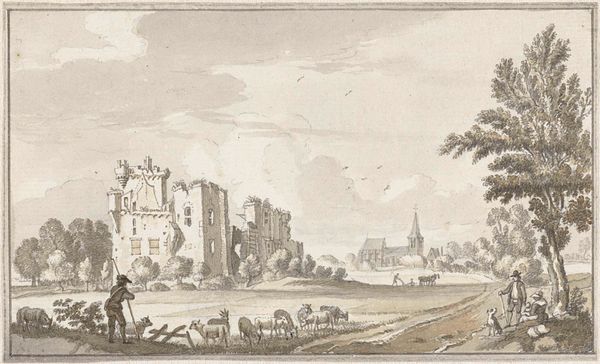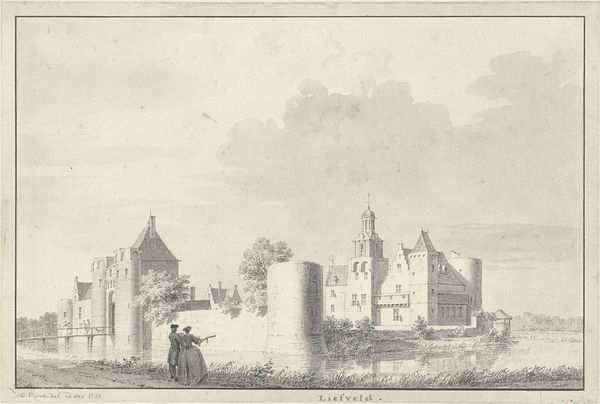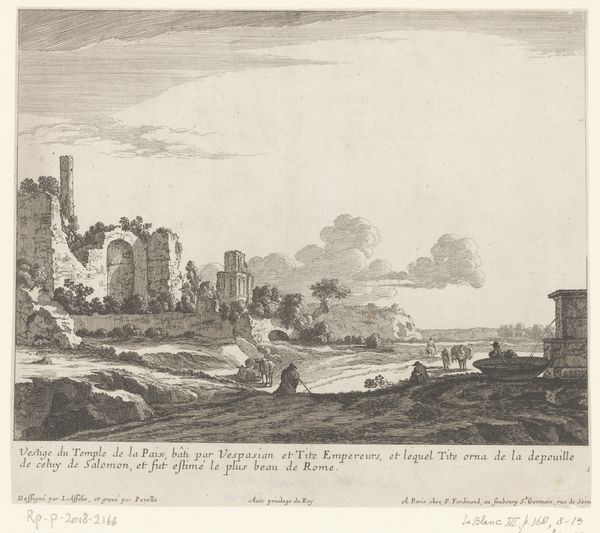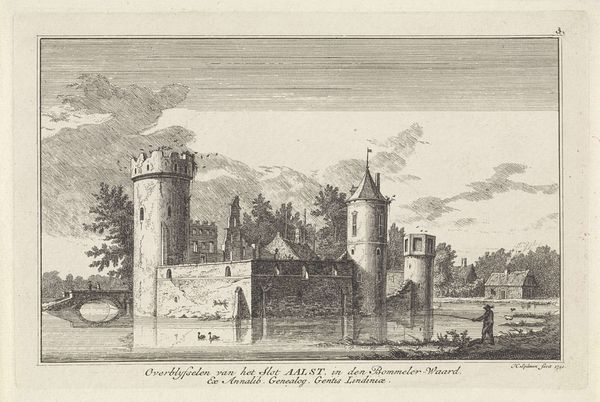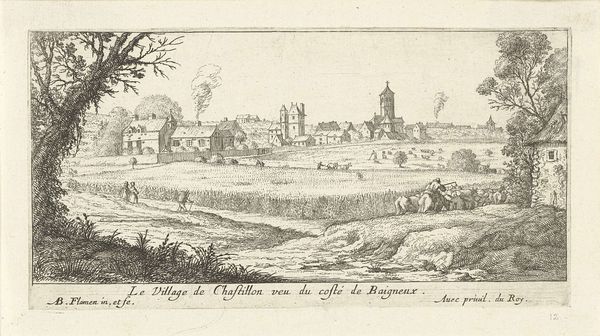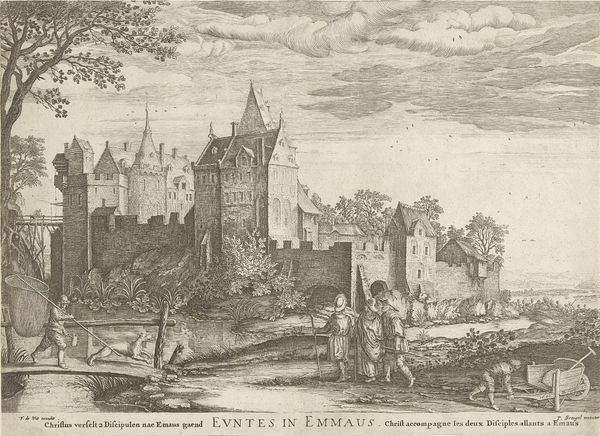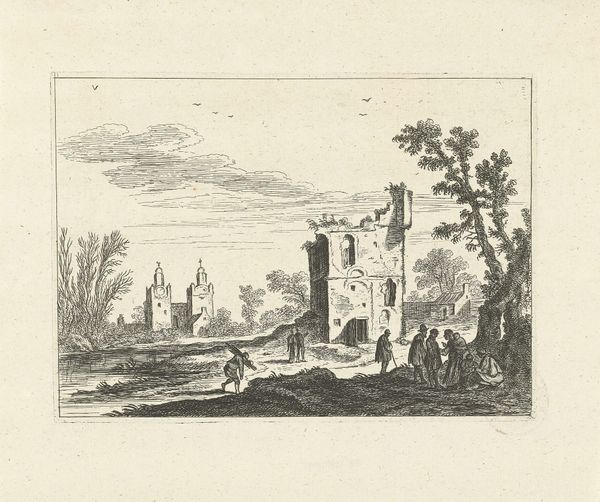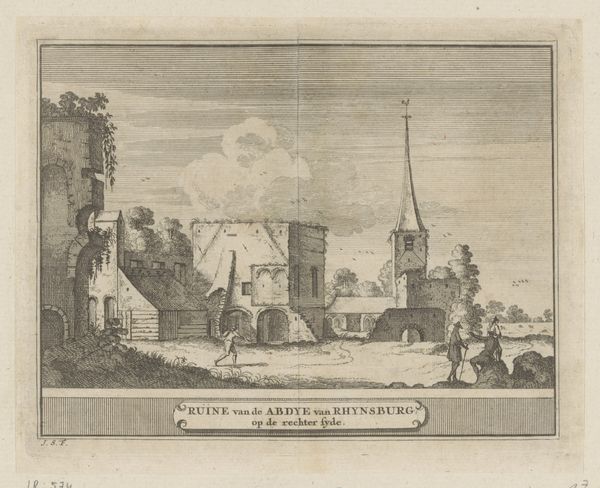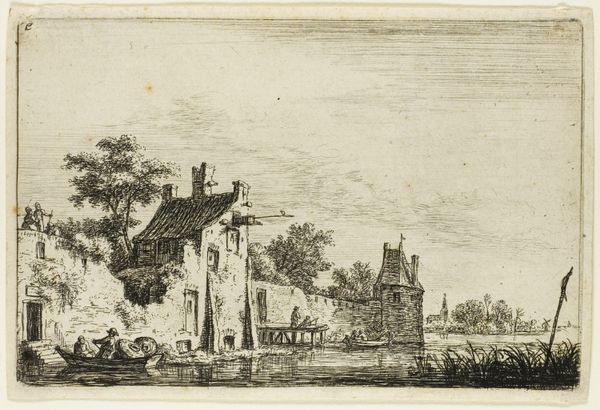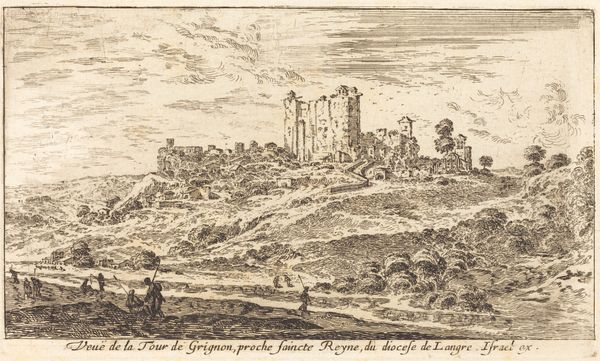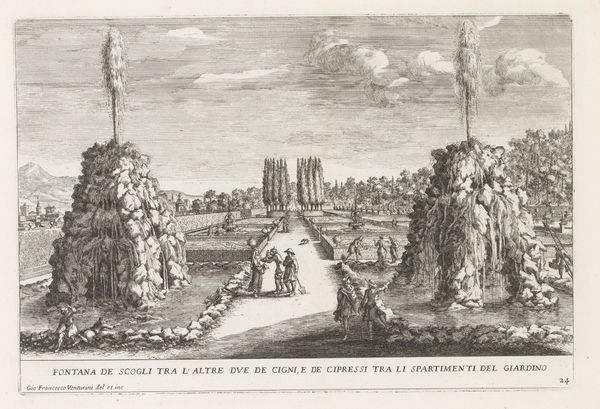
Dimensions: height 118 mm, width 180 mm
Copyright: Rijks Museum: Open Domain
Hendrik van Maarseveen created this print of the House ter Lede ruin in Kesteren in 1766. Here, we see the ruin as a memento mori, a reminder of the transience of earthly power and the inevitable decay of human achievements. This motif taps into a deep-seated human fascination with ruins as symbols of lost grandeur. Notice how the ruin, though crumbling, still dominates the landscape. This echoes the enduring presence of classical antiquity in Renaissance art, where fragments of the past served as both a source of inspiration and a reflection on the passage of time. The ruin also invites us to contemplate the cyclical nature of history, where empires rise and fall, and the only constant is change. Think of the emotional weight carried by ruins, resonating with feelings of nostalgia, loss, and the sublime. This powerful, subconscious engagement ensures the ruin motif continues to captivate audiences. The image conveys a poignant sense of the relentless, non-linear march of time.
Comments
No comments
Be the first to comment and join the conversation on the ultimate creative platform.

